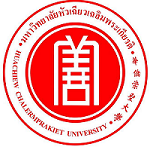Please use this identifier to cite or link to this item:
https://has.hcu.ac.th/jspui/handle/123456789/1675Full metadata record
| DC Field | Value | Language |
|---|---|---|
| dc.contributor.author | ลวิตรา พิธาวุฒิกร | - |
| dc.contributor.author | รสพร กิตติเยาวมาลย์ | - |
| dc.contributor.author | ศุภโชค คงเทียน | - |
| dc.contributor.author | เอกชัย แดงสอาด | - |
| dc.contributor.author | ปณิธี ธัมมวิจยะ | - |
| dc.contributor.author | จริยาวัตร คมพยัคฆ์ | - |
| dc.contributor.author | นพนัฐ จำปาเทศ | - |
| dc.contributor.author | Lawitra Phithawutthikorn | - |
| dc.contributor.author | Rossaphorn Kittiyaowamarn | - |
| dc.contributor.author | Suppachok Kongtian | - |
| dc.contributor.author | Ekkachai Daengsaard | - |
| dc.contributor.author | Panithee Thammawijaya | - |
| dc.contributor.author | Jariyawat Kompayak | - |
| dc.contributor.author | Nopphanath Chumpathat | - |
| dc.contributor.other | Department of Disease Control. Bangrak Sexually Transmitted Infections Cluster | th |
| dc.contributor.other | Department of Disease Control. Bangrak Sexually Transmitted Infections Cluster | th |
| dc.contributor.other | Department of Disease Control. Bangrak Sexually Transmitted Infections Cluster | th |
| dc.contributor.other | Department of Disease Control. Bangrak Sexually Transmitted Infections Cluster | th |
| dc.contributor.other | Department of Disease Control. Bureau of Epidemiology | th |
| dc.contributor.other | Independent Scholar | th |
| dc.contributor.other | Huachiew Chalermprakiet University. Faculty of Nursing | th |
| dc.date.accessioned | 2024-01-29T02:13:46Z | - |
| dc.date.available | 2024-01-29T02:13:46Z | - |
| dc.date.issued | 2022 | - |
| dc.identifier.citation | วารสาร มฉก. วิชาการ 26,2 (ก.ค.-ธ.ค. 2565) : 196-206 | th |
| dc.identifier.uri | https://has.hcu.ac.th/jspui/handle/123456789/1675 | - |
| dc.description | เข้าถึงบทความฉบับเต็มได้ที่ https://he01.tci-thaijo.org/index.php/HCUJOURNAL/article/view/255441/175599 | - |
| dc.description.abstract | การศึกษานี้เป็นการศึกษาแบบ Case-control study มีวัตถุประสงค์เพื่อศึกษาปัจจัยที่มีความสัมพันธ์กับการติดเชื้อซิฟิลิสในกลุ่มชายที่มีเพศสัมพันธ์กับชาย กลุ่มตัวอย่างคือชายที่มีเพศสัมพันธ์ทางทวารหนักกับชายอายุ 18 ปีขึ้นไป ไม่ใช่หญิงหรือชายข้ามเพศ ไม่มีประวัติการรักษาโรคซิฟิลิสและผลตรวจ Anti-HIV เป็นลบ แบ่งเป็นกลุ่มที่ติดเชื้อซิฟิลิสจำนวน 85 ราย และกลุ่มไม่ติดเชื้อซิฟิลิสจำนวน 103 ราย รวบรวมข้อมูลโดยใช้แบบสอบถามข้อมูลส่วนบุคคลและพฤติกรรมทางเพศและการวินิจฉัยการติดเชื้อซิฟิลิสใช้วิธีการตรวจ Chemiluminescence immunoassay (CIA) หรือ Treponema pallidum hemagglutination assay (TPHA) ผลการศึกษาพบว่า กลุ่มตัวอย่างที่ใช้ถุงยางอนามัยบางครั้งหรือไม่ใช้ถุงยางอนามัยเมื่อมีเพศสัมพันธ์ทางทวารหนักมีโอกาสติดเชื้อซิฟิลิสมากกว่ากลุ่มที่ใช้ถุงยางอนามัยทุกครั้ง 27.45 เท่า (aOR=27.45, 95%CI=9.23 – 81.68, p <.001) และผู้ที่มีบทบาททางเพศสัมพันธ์ทางทวารหนักที่เป็นฝ่ายรับมีโอกาสติดเชื้อซิฟิลิสมากกว่ากลุ่มที่มีบทบาทอื่น 4.85 เท่า (aOR=4.85, 95%CI=1.72 – 13.73, p= 0.003) การมีเพศสัมพันธ์ทางทวารหนักร่วมกับการมีบทบาทททางเพศเป็นฝ่ายรับแบบไม่ได้ป้องกันในกลุ่มชายที่มีเพศสัมพันธ์กับชายเป็นปัจจัยสำคัญของการติดเชื้อโรคซิฟิลิส หน่วยงานที่เกี่ยวข้องด้านโรคติดต่อทางเพศสัมพันธ์ควรให้ความรู้ คำแนะนำในการป้องกันโรค รวมทั้งการเข้ารับบริการตรวจคัดกรองการติดเชื้อซิฟิลิสแก่ผู้มีพฤติกรรมเสี่ยง | th |
| dc.description.abstract | The objective of this research was to determine factors associated with syphilis infection among men who have sex with men. This research was a case-control study divided into 85 syphilis-infected patients as the case group and 103 non-syphilis-infected patients as the control group from the Bangrak STIs center and the Rainbow Sky Association of Thailand. The inclusion criteria of participants were men who had anal sex with men aged 18 years and over, not transgender women or men, no history of treatment for syphilis, and the anti-HIV test result was negative. The sexual behavior questionnaire was used as a data collection instrument. Syphilis diagnosis uses the examination method chemiluminescence immunoassay (CIA) or Treponema pallidum hemagglutination assay (TPHA). The data were analyzed using percentage, odds ratio, and 95% confidence interval. The results showed that the subjects who sometimes used or did not use condoms during anal intercourse were 27.45 times more likely to develop syphilis than those who consistently used condoms (aOR=27.45, 95%CI=9.23 – 81.68, p < .001), and those in the receptive anal sex role were 4.85 times more likely to develop syphilis than those in other roles (aOR=4.85, 95%CI=1.72 – 13.73, p=0.003). Anal sex among MSM, especially those who have had an unprotected insertion in MSM, is a major contributor to syphilis. Therefore, the agencies involved in sexually transmitted diseases should promote and make the service recipients aware of the importance of prevention and screening for syphilis when risky behaviors occur. | th |
| dc.language.iso | th | th |
| dc.subject | ซิฟิลิส | th |
| dc.subject | Syphilis | th |
| dc.subject | โรคคิดค่อทางเพศสัมพันธ์ | th |
| dc.subject | Sexually transmitted diseases | th |
| dc.subject | รักร่วมเพศชาย | th |
| dc.subject | Male homosexuality | th |
| dc.title | ปัจจัยที่สัมพันธ์กับการติดเชื้อซิฟิลิสในกลุ่มชายที่มีเพศสัมพันธ์กับชาย | th |
| dc.title.alternative | Factor-associated Syphilis Infection among Men Who Have Sex with Men | th |
| dc.type | Article | th |
| Appears in Collections: | Nursing - Articles Journals | |
Files in This Item:
| File | Description | Size | Format | |
|---|---|---|---|---|
| Factor-associated-Syphilis-Infection.pdf | 87.84 kB | Adobe PDF | View/Open |
Items in DSpace are protected by copyright, with all rights reserved, unless otherwise indicated.
